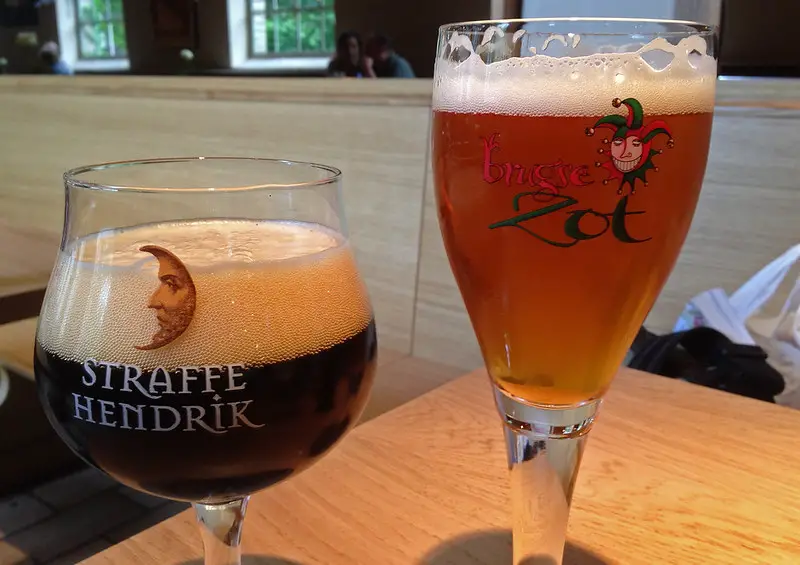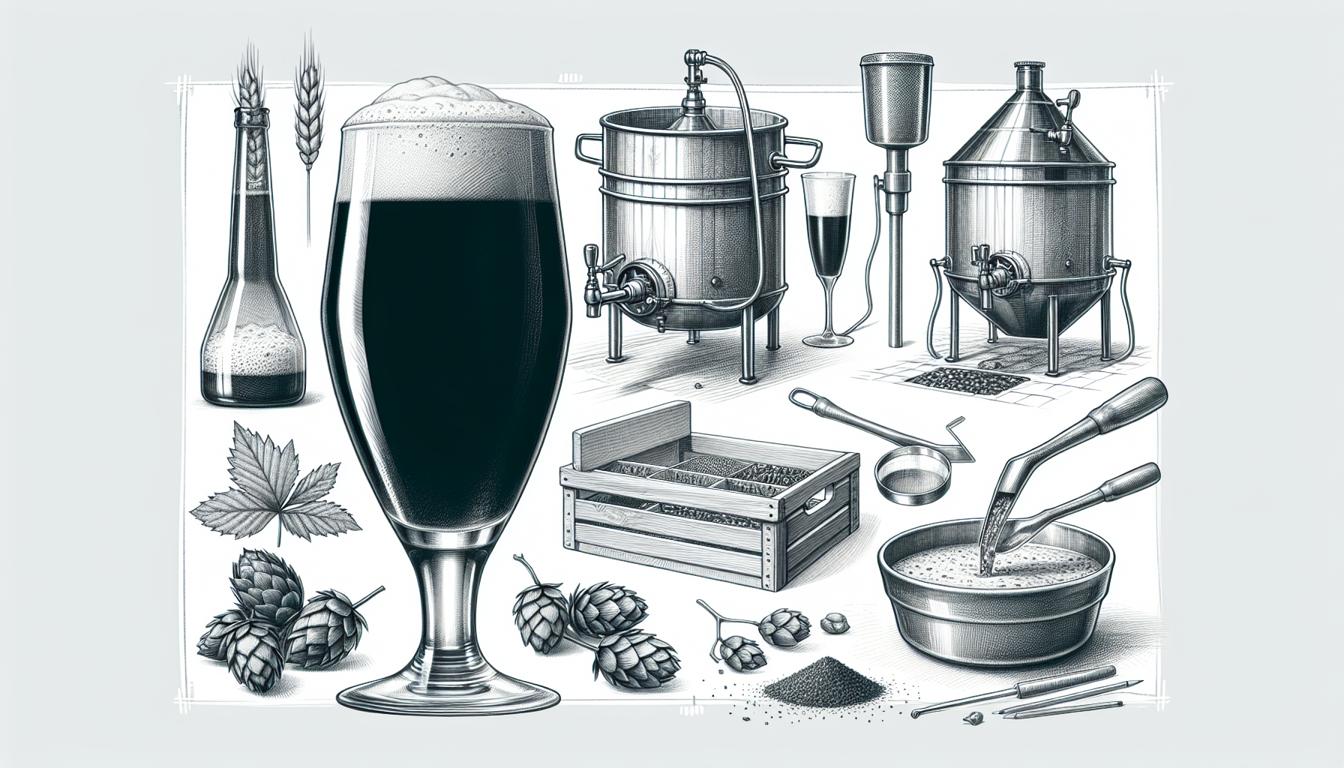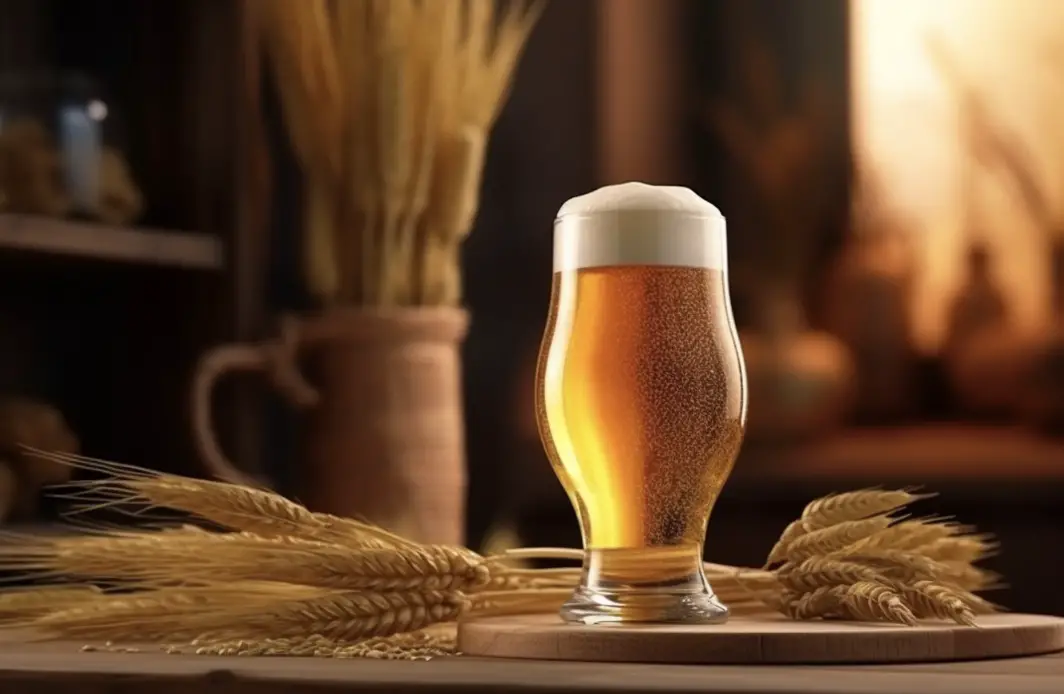Belgian Dark Strong Ale, also known as Belgian Quadrupel, is a rich and complex beer style that originated in the Trappist monasteries of Belgium. These monasteries have a long and storied tradition of brewing, and their beers are considered some of the finest in the world.
History and Key Characteristics
The history of Belgian Dark Strong Ale can be traced back to the 19th century, when Trappist monks began brewing strong and full-bodied beers to sustain themselves during periods of fasting. These beers were often brewed with high amounts of malt, resulting in a rich and malty character.

Today, Belgian Dark Strong Ale is renowned for its deep amber to dark brown color, with a thick and creamy head. It has a complex aroma that combines notes of dark fruits, caramel, toffee, and spices. The flavor is equally complex, with a balance of malty sweetness, fruity esters, and a subtle spiciness. The alcohol content is typically high, ranging from 8% to 12% ABV, giving the beer a warming and full-bodied character.
Recipe: Brewing a Belgian Dark Strong Ale
Ingredients:
- 10 lbs (4.5 kg) Belgian Pilsner malt
- 2 lbs (0.9 kg) Munich malt
- 1 lb (0.45 kg) Belgian Special B malt
- 1 lb (0.45 kg) Belgian Aromatic malt
- 1 lb (0.45 kg) Belgian Caramel 60L malt
- 1 lb (0.45 kg) Belgian Candi Sugar (Dark)
- 1 oz (28 g) Styrian Goldings hops (4% AA)
- 1 oz (28 g) Hallertau hops (4% AA)
- 1 tsp Irish Moss
- 1 package Belgian Ale yeast
Step 1: Mashing
Start by heating 4 gallons (15 liters) of water to 162°F (72°C) in your mash tun. Add all the malts and stir well to ensure they are fully saturated. Let the mash rest for 60 minutes at a temperature of 152°F (67°C). This will allow the enzymes in the malt to convert the starches into fermentable sugars.
Step 2: Lautering
After the mash is complete, it’s time to separate the liquid wort from the spent grain. Slowly drain the wort from the mash tun into your brew kettle, being careful not to disturb the grain bed. This process, known as lautering, will help clarify the beer and remove any unwanted solids.
Step 3: Boiling
Once the wort is in the brew kettle, bring it to a rolling boil. Add the Styrian Goldings hops and boil for 60 minutes. This will help extract the bittering compounds from the hops, balancing out the sweetness of the malt. During the last 15 minutes of the boil, add the Hallertau hops and Irish Moss to help clarify the beer.
Step 4: Fermentation
After the boil, cool the wort to a temperature of 68°F (20°C). Transfer the cooled wort to your fermentation vessel, being careful to leave behind any trub or hop debris. Pitch the Belgian Ale yeast and seal the vessel with an airlock.
Step 5: Aging
Belgian Dark Strong Ale benefits greatly from an extended aging period. After primary fermentation is complete, transfer the beer to a secondary fermentation vessel and allow it to age for at least 2 months. This will allow the flavors to mellow and the beer to develop its characteristic complexity.
Step 6: Bottling
When the aging period is complete, it’s time to bottle your Belgian Dark Strong Ale. Dissolve 5 oz (142 g) of priming sugar in 2 cups of boiling water and add it to your bottling bucket. Transfer the beer to the bottling bucket, being careful to avoid transferring any sediment. Fill your bottles, cap them, and let them carbonate for 2-3 weeks.
Conclusion: Key Points to Remember
Brewing a Belgian Dark Strong Ale requires attention to detail and patience. Here are some key points to remember:
– Malt Selection: Use a combination of Belgian Pilsner, Munich, Special B, Aromatic, and Caramel malts to achieve the rich and complex malt profile of the style.
– Candi Sugar: Dark Belgian Candi Sugar adds fermentable sugars and contributes to the beer’s deep color and flavor complexity.
– Hop Selection: Use low-alpha hops like Styrian Goldings and Hallertau to provide a subtle bitterness and allow the malt and yeast flavors to shine.
– Yeast Choice: Belgian Ale yeast strains, such as Wyeast 1214 or White Labs WLP500, will produce the characteristic fruity esters and spicy phenols that define the style.
– Extended Aging: Give your beer ample time to age and mature, allowing the flavors to meld and the alcohol to mellow. Two months is a minimum, but longer aging periods will yield even better results.
– Bottle Conditioning: Carbonate your beer naturally by adding priming sugar at bottling. This will create a fine, champagne-like carbonation that complements the beer’s rich flavors.
By following these guidelines and experimenting with different variations, you can create your own masterpiece of Belgian brewing. So, grab your brewing equipment, gather your ingredients, and embark on the journey of brewing a Belgian Dark Strong Ale that will impress even the most discerning beer connoisseurs. Cheers!





Leave a Reply
You must be logged in to post a comment.